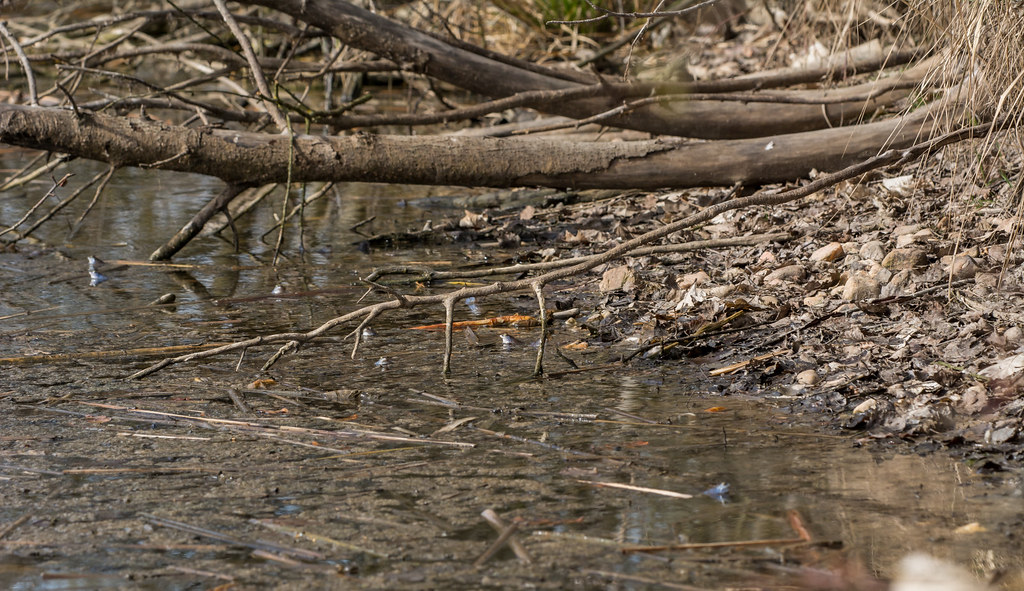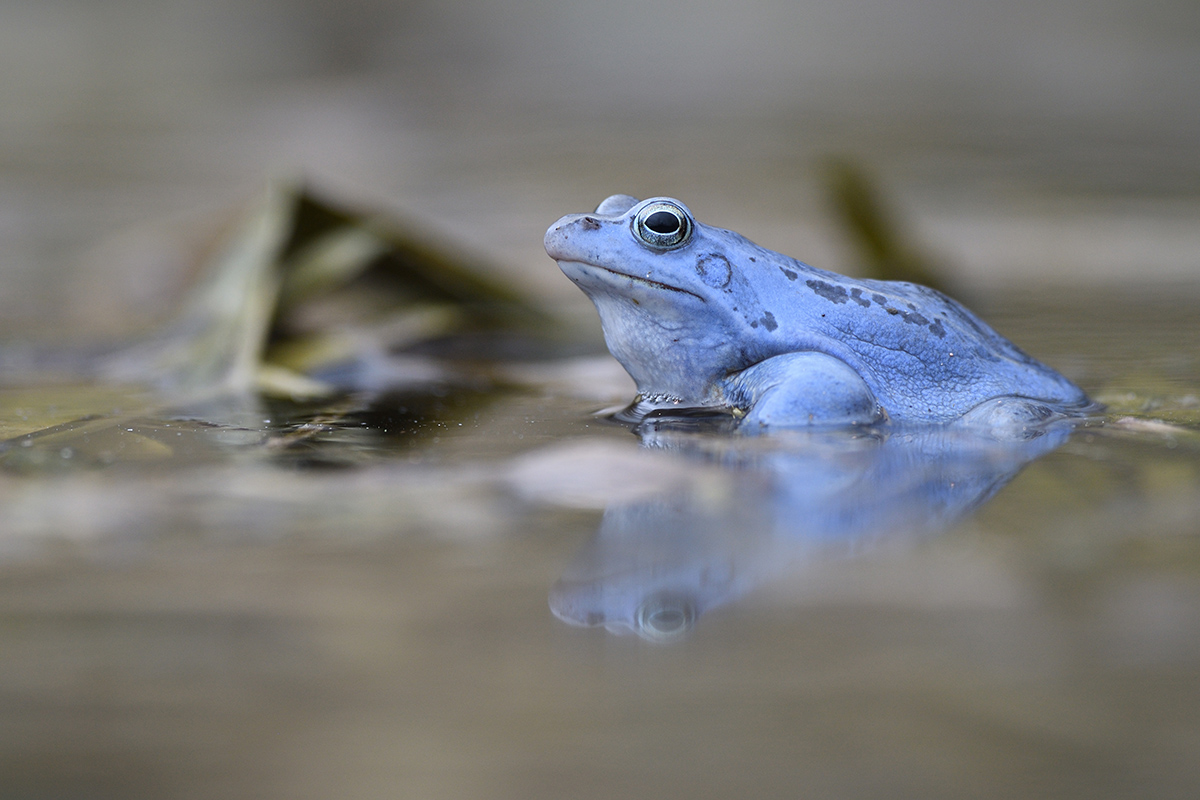I think there have been some misinterpretations with my observation in color change. I think, it is not stress, but diving into the (very) cold water - therefore a temperature problem ?
Yes that could be the explanation.
@Ilian
1) Evolution is no strategy: Why don't females turn blue? Probably it's impossible. The mechanism of color change in this case requires most likely some high level in male hormones. Females only spend a minimum of time in the water. After spawning they flee the harassment of the males. Chances of being killed by predators while in the water are thus much lower for females.
I think we can assume that arvalis and temporaria share a common ancestor. So the question is: why does arvalis turns much more blue than temporaria? Probably at one point they were separated and evolved in different habitats. I'll bet that arvalis occupied a colder climate in a sparsely vegetated habitat. It is called moor frog for a reason. Therefore in general they breed very early in the season (if seasons are short, they would need to), they prefer bogs and heathland as a habitat and they might be found breeding during the day more often because nights are too cold for activity.
Temporaria can also be found breeding during the day but much less than arvalis and always more hidden between vegetation or in small pools covered in shade. Arvalis has real peak moments of breeding activity at high noon and they venture out more in the open.
2) and 3) If you look straight down from a bridge in the shadow of the bridge, yes it doesn’t look blue. But I stood on a higher point overlooking a bog/pond recently. It appeared very blue, more so than looked at from the water’s edge. Even with a little bit of wind (or even frogs moving and creating small waves), you will see a lot of “sun glitter”; and for me it seems logic that a blue frog is less conspicuous in open water during a bright sunny day. I don’t say they become invisible and never get eaten. They just might get overlooked more often by a flock of hungry cranes or whatever flew around when they evolved this feature. If I only had a drone to test my crazy theory

…
A fleeing reaction doesn’t contradict with camouflage. It’s a very basic instinct that acts supplementary to camouflage. When you walk passed a water’s edge with a lot of pelophylax around,they all flee by diving in the water while they were perfectly camouflaged and readily overlooked.
Of course I realize that my theory can be completely wrong. I just wanted to share a completely different view point. In these cases not much is for sure. Maybe turning blue lost its relevance over time in changing environmental circumstances but if it doesn’t present a disadvantage, such a feature can linger in a species.

